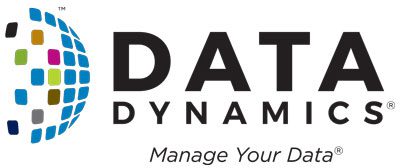During the pandemic, there was an upsurge in the usage of health tech and wearable devices that helped consumers track their health data and control it. Take a smartwatch, for instance – It tells you how many steps you’ve taken in a day, how many calories you’ve consumed and burned, your heart rate and when it increases or decreases, etc. The global sales of smartwatches jumped by 18% in 2020, according to a report by Gartner.
Besides wearable devices and health apps, the healthcare sector saw a spike in telehealth and telemedicine, which enabled consumers to contact doctors virtually, get a diagnosis and buy medicines without stepping outside. Telehealth services have grown exponentially since the outbreak of the Covid-19 pandemic. In the first quarter of 2020, one clinic chain experienced a 600% increase in telehealth compared to the previous year’s period. According to Frost & Sullivan, telehealth is expected to grow sevenfold by 2025.
What is telehealth and telemedicine?
In contrast to telemedicine, telehealth encompasses a broader range of remote healthcare services. It is essential to keep in mind that telemedicine is a term that refers specifically to remote clinical care. In contrast, telehealth also refers to remote non-clinical care, for example, telemedicine training, administrative meetings, and continuing medical education. A subset of telehealth, telemedicine refers to the use of technology to provide health care and education to distant patients. With telemedicine, clinical services can be delivered to patients without an in-person meeting using electronic communications and software.
Digital health optimizes costs and provides accessibility to a broader audience.
Increasing profit margins with minimal investments is a crucial reason more health systems are implementing telehealth and virtual care options. Their cost management and on-demand scalability make them risk-free investments during uncertain economic times. Digital health becomes a value add when healthcare systems move to outcomes-driven models, deploying digital programs that engage patients and help them achieve positive medical outcomes. Patients, providers, payers, pharmaceutical companies, and specialists are able to collaborate effectively, resulting in enhanced value-based care, interoperability, better compliance adherence, and lower costs. These interactions gather an exponential amount of data every second about treatment outcomes, diagnosis, and overall patient health at every step of the process. Did you know – 30% of the world’s data volume is estimated to be generated by the healthcare industry alone, and is expected to reach 36% by 2025, which is 6% faster than manufacturing, 10% faster than financial services, and 11% faster than media and entertainment.
Digitalization of healthcare data
Traditional healthcare organizations are blending the increasingly popular telehealth and telemedicine with their current practices to cater to all age groups of patients. The GenZ population, for example, is always on the move and on their phones, and they want quick, easy solutions that won’t take up too much time. The newer generations are looking for faster resolutions without spending hours at the hospital waiting for a clinical check-up. This is possible through the digitalization of healthcare data and processes and making it available at the click of a button.
All forms of healthcare data, including prescriptions, patient history, test results, and handwritten medical notes, are now being made digital. This enables the interoperability of healthcare data. It allows physicians, patients, insurance providers, pharmacies, etc to get a holistic view of their patient’s medical history and background and enables them to access a patient’s medical data across the healthcare industry. However, to be able to utilize the data that is generated in the healthcare sector through the medium of wearable devices, health applications, telehealth services, etc., healthcare organizations need to structure their unstructured data. You might be surprised to learn that 80% of the data generated is unstructured, and only 12% of it is analyzed.
Challenges faced by the healthcare sector in the digitalization of data
1. Unstructured data sprawl: The healthcare industry generates massive sprawls of unstructured data generated on a daily basis. For instance, a single patient generates nearly 80 megabytes of data each year in imaging and EMR data. This data includes the PHI/PII and business-sensitive data that must be protected at all costs. In order to secure data, the unstructured data first needs to be structured, analyzed, and then categorized into hot, cold, ROT, or sensitive data. It is then possible to quarantine data with optimum access control and audit for security and compliance reasons, as well as archive it for cost savings.
2. Siloed data: 86% of CXOs agree that eliminating organizational silos is critical for the use of data and analytics in decision-making. The healthcare industry is inundated with data silos. It stores data in multiple data lakes leading to sprawls of redundant and duplicate data. Data lakes quickly become data swamps increasing storage costs, serving as a staging ground for malicious actors, endangering data privacy, and damaging a company’s reputation.
3. Lack of interoperability: Interoperability is the ability of information systems, devices, and applications (systems) to provide timely and seamless portability of information and optimize the health of individuals and populations globally, through access, exchange, and integration of data in a coordinated manner within and across organizational, regional, and national boundaries. However, today’s healthcare system is plagued by unconsolidated data from disparate systems, quite the opposite of interoperability. This means that patient data is often stored in separate systems and databases, making it difficult to get a complete picture of a patient’s health. Often, these systems do not communicate with each other, making it difficult for providers to provide holistic care, and researchers to access all of the data they need for clinical trials.
4. Security and compliance: With technological advancements, the healthcare industry faces a growing challenge in protecting patient information. Did you know the healthcare industry experiences the highest number of data breaches as compared to any other industry? What’s more alarming is that according to Kays Harbor, 34% of healthcare data breaches come from unauthorized access or disclosure and this unauthorized access has increased by 162% over the past three years. Even so, its growth is still staggering. The root cause – unstructured data. IDC estimates that 80% of medical data remains untapped and unstructured, comprising typed and written text, radiological images, pathology slides, video, audio, streaming device data, PDF files, faxes, PowerPoint slides, and emails. Healthcare organizations, even those that integrated IT and electronic health records (EHRs) to increase interoperability, now have mountains of unstructured data that are hard to find, process, or use. Most high-profile data breaches involve the release of unstructured information containing personal information such as addresses, names, account information, and so forth.
Here’s an example of how one of the top 5 integrated healthcare services companies in the world saved $7.5 million in their total cost of ownership annually by implementing intelligent data lifecycle management.
How can Data Dynamics empower healthcare organizations with intelligent data lifecycle management? With Data Dynamics’ scalable, unified unstructured data management platform, healthcare data is streamlined and secured, data classification is effective, and patient data is safeguarded with absolute compliance and efficiency. The platform encompasses four modules – Data Analytics, Mobility, Security, and Compliance. Each module has been customized to meet the industry’s needs and is helping healthcare enterprises modernize their data management ecosystems efficiently and effectively.

With Data Dynamics, organizations can eliminate the use of individual point solutions with siloed data views. Instead, they can utilize a single software platform to structure their unstructured data, unlock data-driven insights, secure data, ensure compliance and governance and drive cloud data management. Ultimately, the company’s vision is to help organizations achieve data democratization so that users, no matter their technical background, can instantly access, understand, and derive maximum insights from unstructured data sprawls. Click here to know more.
Furthermore, Data Dynamics has recently partnered with Microsoft to help organizations migrate unstructured data into Azure for FREE. Click here to know all about it or reach us at solutions@datdyn.com I (713)-491-4298 I +44-(20)-45520800






